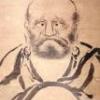-
Posts
2,866 -
Joined
-
Last visited
-
Days Won
12

Shugyosha replied to mareo1912's topic in General Nihonto Related Discussion

Shugyosha replied to Krystian's topic in Translation Assistance

Shugyosha replied to Krystian's topic in Translation Assistance

Shugyosha replied to Moley's topic in Auctions and Online Sales or Sellers

